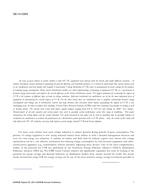Vapour compression refrigeration dates back to 1834, when Jacob Perkins received a British patent for a closed-cycle ice machine. By the 1870s a number of refrigerants were used, among them ammonia. By the 1930s numerous new refrigerants, including CFCs, were developed. Ammonia (R717) is referred to as an alternative refrigerant. In actuality, ammonia was the first refrigerant successfully used on a large scale in both the United States and Europe. Chilling water with ammonia is not new. Dairies and industries have been doing it for years. For district cooling, water or a glycol/water mixture is cooled by ammonia chillers, as is done by CFC chillers, and distributed to users for air conditioning. One of the major differences is that ammonia has zero ozone-depleting potential and zero global-warming potential. Personnel and environmental safety are overriding considerations. Both primary and secondary refrigeration systems operate fully automatically without the presence of operators. Fifteen different safety features are utilised in designing the new systems. Performance comparisons show that ammonia is clearly the refrigerant of choice for most systems, especially for district cooling systems.
KEYWORDS: air conditioning, ammonia, district cooling, ammonia, refrigerants, replacing, compression refrigeration, history, chillers, fluorocarbons, performance, comparing, R11, R12, R22, R113, R114, R114a, R500, R717, safety, designing, operations, coefficient of performance.
Citation: Symposium, ASHRAE Trans. 1994, Vol.100, Part 1,
Product Details
- Published:
- 1994
- File Size:
- 1 file , 1 MB
- Product Code(s):
- D-17897


